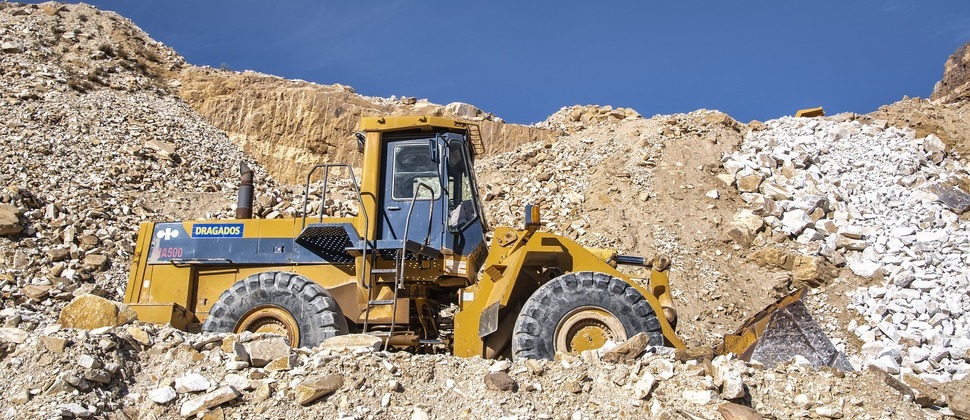
What is the financial guarantee or Insurance Bond in mining activities?
Before beginning mining activities, the entity receiving the quarry authorization or mining concession must provide a financial guarantee (insurance bond for the quarry concession).
This serves as a security for the obligations tied to the authorization. We provide Online Insurance Guarantees to companies throughout the entire national territory, including the islands.
Why not check out our client testimonials? You’ll be surprised to see how effectively we’ve met their needs.
Timing and Presentation Methods
The guarantee must be provided when receiving the authorization, along with updated company details and the declarant’s identification. Authorization validity depends on this guarantee. Guarantees for quarries – temporal differences: For quarries authorized before 16.03.2018: it refers to art. 16 of L.R. 44/1982. For quarries authorized after 16.03.2018: it’s based on art. 14 of L.R. 13/2018.
Purpose of the Financial Guarantee
- Ensure the correct realization of the repositioning project.
- Cover municipal contributions.
- Manage extraction waste.
Calculation and Expiry of the Guarantee
The amount is determined by the authorization measure. It must be submitted within 120 days from the notification of the authorization, extendable by another 90 days under special circumstances.
How is the Financial Guarantee Defined?
Specifications are outlined by the Regional Council, but until new regulations are approved, existing directives will be followed.
Biennial Adjustments for pre-2018 quarries
The guarantee amount is regularly adjusted based on the ISTAT index. Accepted Guarantee Forms:
- Bank guarantees.
- Surety bonds issued by duly authorized insurance companies.
- Policies from authorized financial intermediaries registered in the Albo 106 T.U.B. Bank of Italy.
Duration and Adjustments
Contracts last two years from the date of authorization. ISTAT index-based adjustments must be presented biennially, and a new contract established at the end of each period.
Non-compliance
Failing to submit adjustments can lead to activity suspension. In the event of further non-compliance, authorization can be revoked.
In summary, providing a financial guarantee is crucial to start mining activities. This guide offers a clear overview of the rules and associated expectations.
We are Agents of the only financial company authorized to issue Guarantees and Financial Capacity certifications for the operation of Nautical Schools.
Contact us directly online for a real-time response: Message us on WhatsApp: +39 339.71.50.157 send a message, and we’ll reply during business hours, within 5 minutes
Or call one of our nearest offices: Tel. +39 055 49.32.199 – Tel. +39 02 667.124.17 or email: info@italiafideiussioni.it
Application for Quarry Cultivation or Mining Concessions
The cultivation of quarry material deposits is subject to the issuance of the quarry activity authorization.
Quarry activity is subject to Regional Law provisions.
The types of extractable material are classified as:
- Group A materials, intended for construction, consisting of:
- Sands and gravels.
- Detritus material.
- Limestone for construction.
- Group B materials, intended for other uses, consisting of:
- Limestone for industrial uses, such as cement production, lime, aggregates, and the like.
- Clays.
- Basalts and volcanic materials.
- Ornamental stones (limestone and trachyte for cutting and polishing, marbles).
- Quartz, quartzite.
- Gypsum.
- Siliceous sands.
- Millstones.
- Peat.
- Any other material found in any form of natural deposit belonging to the second category.
The law also provides for the planning of quarry activity through the Regional Quarry Activity Plan.
Guide to Quarry Concession Authorization: Procedures and Requirements
Authorization Overview: To obtain the authorization to exploit a quarry, a unified procedure involving all relevant administrations is required, ensuring a fast and simplified administrative process.
Preliminary Steps
To obtain the VIA eligibility check, the interested company must submit a request to the Environment Desk.
Role of the Municipality
Once all positive opinions are received, the Municipality organizes the Services Conference, which involves various authorities, including the Municipality itself, the Province, the Superintendency of Archaeology Fine Arts and Landscape, and various regional departments.
Documents and Necessary Opinions
During the procedure, various consent acts are needed, including the opinion on the protection of environmental assets, the Superintendency’s approval, and the opinions of the hydrogeological and Basin Authorities.
Multi-municipal Territories
If the quarry extends over several municipalities, the Services Conference will be organized by the Municipality with the largest area involved.
Unified Regional Authorization Procedure
The regional environmental department coordinates the services conference, involving all competent authorities. Once the conference is concluded, the authorization is issued.
Public or Private Property Quarries
If an authorization for quarries belonging to public or private entities is requested, the licensee will be chosen through a public procedure.
Mining Activity
Quarry deposit cultivation requires authorization and is regulated by Regional Laws, therefore different for each region, but similar.
The extracted materials are divided into two groups: Group A: materials intended for construction such as sands, gravels, detritus, and limestones for construction. Group B: materials intended for various uses, including limestones for industrial uses, clays, basalts, ornamental stones, and others.
The law establishes the planning of quarry activity through the Regional Quarry Activity Plan, especially for Group A materials, providing technical and administrative guidelines.
Provisions of the Regional Plan
For Group A materials, it defines where extractions can take place, maximum volumes, and specific rules. This applies to sand and gravel quarries, detritus, and construction limestones. For Group B materials, such as limestones for industrial uses and clays, there are detailed specific provisions defined in the Regional Plan.
Finally, the Regional Plan establishes general rules for all types of quarries, including safety, environmental protection, recovery plans, and more.